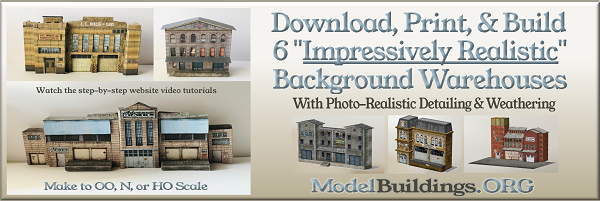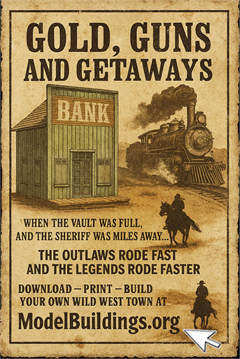Everything on model trains, model railroads, model railways, locomotives, model train layouts, scenery, wiring, DCC and more. Enjoy the world's best hobby... model railroading!
Battery Powered Locomotive
Stanley asks readers:
“I would like to know how to convert either a dummy loco or one with a defunct motor in order to run on dead track. I presume it would require off/on switch, wiring [of course] and maybe four AA batteries. Any help out there?”
Add your suggestion.
10 Responses to Battery Powered Locomotive
Leave a Reply















I’ve never put a battery into a loco, but it should work, as long as the speed is about the same as your regular locos. Without the battery, you can also make it a dummy. Take out the motor and make it as light as possible, leaving the wheels and couplers, then couple it behind other locos.
My first ever train in 1979 was actually battery powered. It was a little black OO tank engine on standard track, but the controller sat on top of two 9v / 12v batteries, and when I got a second train for Xmas that year, it was mains powered, and I just unplugged the previous controller, and plugged in the new one. What I’d do now, is get a big 12v leaisure battery (like they use in caravans), hook it up to an invertor, and run the layout like that – which I was planning to do when my layout was going to be in the garage.
One railway modelling site/magazine -maybe a narrow-gauge one- featured an article where a guy used a rechargeable battery (Cell-phone?) and a radio control receiver from a R/C model aircraft to run a loco (HO or 00 scale) 0-6-0 or 0-4-0
He used a simple model aircraft radio controller to control the loco. it was wired to be able to go forward and reverse and variable speed. It was independent of track power. He had a switch wired to disconnect the battery from the control circuit and switch it to a hidden connector to charge the battery. The voltage is lower than the usual for full power, but he claimed it was perfectly adequate for scale speed shunting (switching) operations and allowed for 4 or 5 hrs of operating time before needing a recharge.
Hope this helps, Let us know of your progress.
Regards,
Bernard
Back again, on the web I found one “blog” entry /thread with lots of information. This is not the one I first read but it might help.
model-railroad-hobbyist.com/node/5489
Good Luck
Bernard
To convert to a battery power, the first thing to do (depending on how old the loco is), is to change the motor to one that draws very low current, preferably a can motor. This should also be a low-voltage motor too (6v), so that you don’t need lots of batteries to try and pack into your loco. The best battery choice (because of size) are Lipo batteries, compact and powerful. You will also need a remote controlled power converter, that allows digital-proportional speed and reversing voltage polarity. That is the tough part, where to get this? Off hand, many RC cars have this, Xmod, Mini-z etc. These operate at 27Mhz AM, and you can find used ones on Ebay for around $50 each with controller. These cars do used 4 AA batteries (6vdc). Remove the circuit from the RC car, and install it into your loco. If you can’t put 4 AA’s inside the loco, you can put two 3.7v lipo’s in series (7.4v), it should still work. Warning: Lipo batteries charge very different than nicads etc! You will need to get the proper charger for you Lipo batteries to be safe. Also, shorted Lipo batteries are dangerous, and can cause fires. For safety and simplicity, if you can use alkaline batteries, then that’s easier. You can use a length of wire, taped inside the top of the loco shell for the antenna, that should work. Connect the battery source to the control board via a switch to turn off and on. Connect the motor drive output to the motor, close it all up, and you are good to go.
I converted all my DCC Locomotives (Steam On30) to battery power. I still use my NCE equipment to run my system, the only difference is that I don’t use track power, don’t have to clean the track and don’t worry about shorts since there is no track power.
How did you do it? Do they have sound?
Bob, can I get a little more information? I have large scale layout using NCE to power and control locos. I am tired of track conduction errors — cleaning the track — but love the NCE controls. Are you saying you still power the track to control the engines? How is that an improvement?
This group is dedicated to dead rail model railroading.
http://groups.yahoo.com/group/DeadRailSociety/
I have powered DC track with 9V battery, works fine (once electricity was down), Locos moved slowly though. Depends on how heavy is your loco. You might need to make it a bit lighter, in order it would move faster.
But if you want to run battery powered loco on live track, then you need to remove power connection between track and motor. Then im sure it will work fine. But you kinda cant control loco moving.